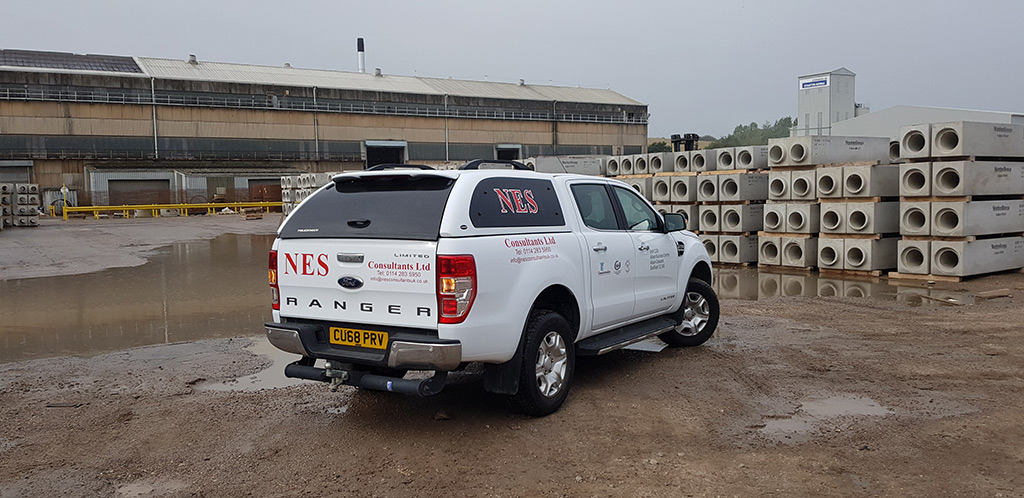A management survey is the standard survey. Its purpose is to locate, as far as reasonably practicable, the presence and extent of any suspect ACMs (Asbestos Containing Materials) in the building which could be damaged or disturbed during normal occupancy, including foreseeable maintenance and installation, and to assess their condition.
Management surveys will often involve minor intrusive work and some disturbance. The extent of intrusion will vary between premises and depend on what is reasonably practicable for individual properties, i.e. it will depend on factors such as the type of building, the nature of construction, accessibility etc.

Assessment
A management survey should include an assessment of the condition of the various ACMs and their ability to release fibres into the air if they are disturbed in some way. This ‘material assessment’ will give a good initial guide to the priority for managing ACMs as it will identify the materials which will most readily release airborne fibres if they are disturbed. The survey will usually involve sampling and analysis to confirm the presence or absence of ACMs. However, a management survey can also involve presuming the presence or absence of asbestos. A management survey can be completed using a combination of sampling ACMs and presuming ACMs or, indeed, just presuming. Any materials presumed to contain asbestos must also have their condition assessed (i.e. a material assessment). Management surveys can involve a combination of sampling to confirm asbestos is present or presuming asbestos to be present.
By presuming the presence of asbestos, the need for sampling and analysis can be deferred until a later time (e.g. before any work is carried out). However, this approach has implications for the management arrangements. The duty holder bears potential additional costs of management for some non-ACMs.
Any work carried out on ‘presumed’ materials would need to involve appropriate contractors and work methods in compliance with CAR 2012 (Control of Asbestos Regulations 2012) irrespective of whether the material was actually an ACM or not. Alternatively, before any work starts, sampling and analysis can be undertaken to confirm or refute the presence of asbestos. The results will determine the work methods and contractors to be used.
The ‘presumption’ approach
The ‘presumption’ approach has several disadvantages: it is less rigorous, it can lead to constant obstructions and delays before work can start, and it is more difficult to control. ‘Default’ presumptions may also lead to unnecessary removal of none ACMs and their disposal as asbestos waste. Default presumptions may be suitable in some instances, e.g. ‘small’ or simple premises, as part of a client’s management arrangements. Surveyors should always endeavour to positively identify ACMs. A sufficient number of samples should be taken to confirm the location and extent of ACMs. It is legitimate to reduce sample numbers where materials can be strongly presumed to be ACMs. However, the default presumption option should be avoided where possible, as it can make managing asbestos more difficult for the duty holder. Default presumption should only be used in circumstances where it is requested by the client and/or where access genuinely cannot be obtained. When sampling is carried out as part of a management survey, samples from each type of suspect ACM should be collected and analysed. If the material sampled is found to contain asbestos, other similar materials used in the same way in the building can be strongly presumed to contain asbestos. Less homogeneous materials (e.g. different surfaces/coating, evidence of repair etc) will require a greater number of samples. The sample number should be sufficient to establish whether asbestos is present or not in the particular material. Sampling may take place.
Sampling
Simultaneously with the survey, or as in the case of some larger surveys, sampling can be carried out later as a separate exercise. All areas should be accessed and inspected as far as is reasonably practicable. Areas should include underfloor coverings, above false ceilings, and inside risers, service ducts, lift shafts etc. Surveying may also involve some minor intrusive work, such as accessing behind fascia’s and panels and other surfaces or superficial materials. The extent of intrusion will depend on the degree of disturbance that is or will be necessary for foreseeable maintenance and related activities, including the installation of new equipment/cabling. Surveyors should come prepared to access such areas (i.e. with the correct equipment etc). Management surveys are only likely to involve the use of simple tools such as screwdrivers and chisels. Any areas not accessed must be presumed to contain asbestos. The areas not accessed and presumed to contain asbestos must be clearly stated in the survey report and will have to be managed on this basis, i.e. maintenance or other disturbance work should not be carried out in these areas until further checks are made.
